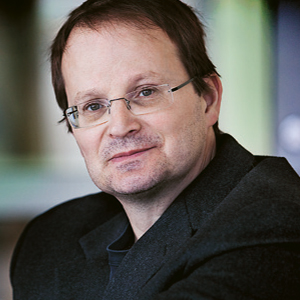24 million to “New Directions in Learning Dynamical Systems”
In the end of February, the Swedish Research Council announced their decision regarding grants in Natural and Engineering Sciences. Four research groups from KTH received a total of 96 million SEK, and one of them is led by Håkan Hjalmarsson, professor in automatic control.

In 2016’s call for Research Environment Grant Natural and Engineering Sciences made by the Swedish Research Council, four research groups from KTH received grants. In the project “New Directions in Learning Dynamical Systems”, led by Håkan Hjalmarsson, researchers from two departments at KTH and Uppsala University will collaborate in an area intersecting automatic control, signal processing and machine learning. From KTH, Cristian Rojas och Bo Wahlberg will participate alongside Fredrik Lindsten, Thonas Schön, Peter Stoica och Dave Zacharia from Uppsala Univercity.The grant of a total of almost 24 million SEK will be divided over six years.
Congratulations Håkan! How does it feel?
“It feels fantastic and very encouraging. It validates our long term effort in this research area. Knowing how tough the competition is for this type of funding, it is also very honoring.”
Tell us about the research project you’ve received funds for. What is it about?
“Automatic control is important in many of the “hot” technology related research areas, smart buildings, self-driving vehicles and self-learning robotics are a few examples. The idea is to, based on a model of the system’s dynamics, optimize the predicted behavior. There is a huge potential for this type of control in other areas as well, such as bio-production and other types of manufacturing industry. Unfortunately, it is often very costly to develop models for the type of complex systems involved as it requires high competence and is very time-consuming. It becomes even more difficult if the system changes its dynamics over time, compare with a robot that picks up a suitcase.
Our objective is to build a strong research environment for modeling complex dynamical systems using sensor data. We will study some of the most critical aspects of this area: The acquired sensor data are not exact. This can be handled in an effective way using statistical methods. Unfortunately, this is computationally very expensive for complex models. We will study how to simplify computations using Monte Carlo methods. We will also study how to use active learning to improve the quality of the sensor information that is obtained. For a robot this means that one makes it move in a smart way when collecting measurements. Interestingly, this is similar to how Google’s AlphaGo learns to play Go so there is a close connection to self-learning systems. Finally, we intend to study modeling of interconnected dynamical systems, for example unmanned vehicles in formation flight on a rescue mission.”
What kind of possibilities does a grant of this scale mean?
“The challenges in this research area require competences spanning automatic control, signal processing, and machine learning. The groups at KTH and Uppsala University complement each other in an excellent way in this respect. Thanks to this we have had collaborations in smaller projects before without explicit funding. These “hobby projects” have been very rewarding and I now very much look forward to going “all in” and for us to be a driver in this area. Opportunities abound!”
